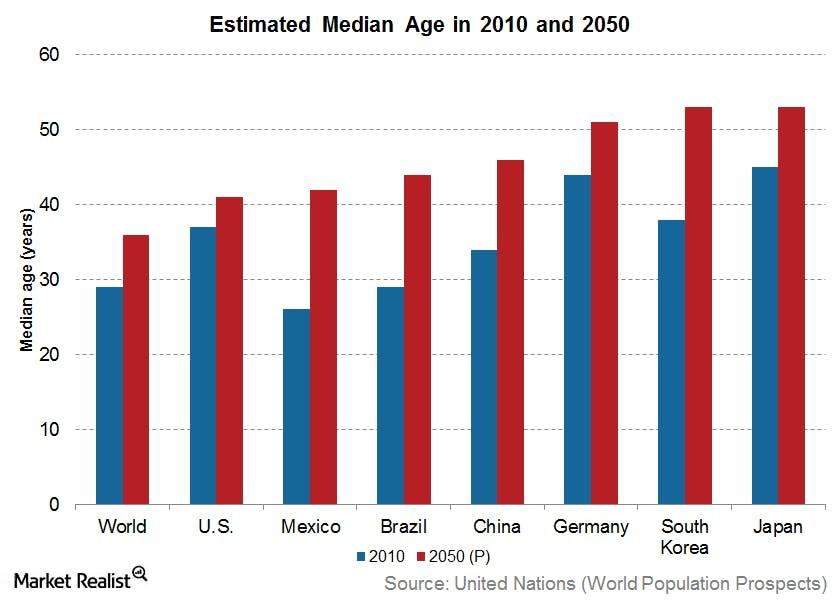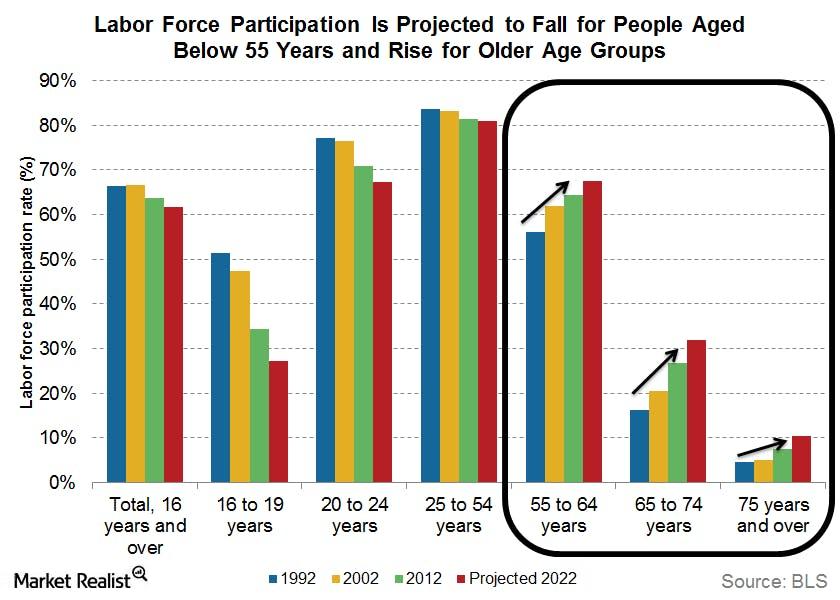The Aging World Means a Graying Workforce
We’re in a rapidly aging world. According to the United Nations World Population Prospects report, the median age of the world is estimated to grow from 29 years in 2010 to 36 years by 2050.
Sept. 1 2020, Updated 9:52 a.m. ET

Is this a permanent change or a one-time adjustment for the Baby Boomer generation?
Hodin: It is through the 21st century, and it is not only connected to the baby boomer bulge. With the advances in science and medicine, hundred-year life spans are now a matter of course. That’s never been the case before in human history.
At the same time, we’re seeing stunningly low birth rates everywhere on the planet as societies modernize and urbanize. This is true across emerging markets, in Africa, Asia and Latin America. Then there are the more industrialized nations. Look at Japan. By about 2020, they’re going to have more than one-third of their population over 60, rapidly approaching 40 percent. Clearly, the systems that were put in place in Japan after WWII—pension, retirement, health care and more—will no longer work.

Market Realist – An aging world and the workforce
The above graph reiterates the trend of the rapidly aging world (ACWI). According to the United Nations World Population Prospects report, the median age of the world is estimated to grow from 29 years in 2010 to 36 years by 2050. The median age is estimated to be 53 years in Japan (DXJ), 51 years in Germany (EWG), 46 years in China (FXI), and 41 years in the United States (VTI) by 2050.
According to a study by Imperial College London, for every one person aged above 65 years, there are estimated to be only 3.9 working age people by 2050. This is a steep decline from the estimate of 11.75 in 1950 and 8.5 in 2011.

The labor force participation rate for people aged 15–64 years is estimated to fall by 2022. On the other hand, the labor force participation rates of people aged 55 and older has been steadily climbing over the years, as you can see in the above graph.
An older workforce is generally associated with a decline in labor force productivity rates. Older populations also tend to save more than they spend. So a direct hit to consumer spending (XLY) could be in the cards. This could lead to lower economic output and thus slower global growth in the future.
In its recent World Economic Outlook report, the International Monetary Fund (or IMF) stated, “Working-age population growth is likely to decline significantly in most advanced economies, particularly Germany and Japan, where it will reach about -0.2 percent a year by 2020. At the same time, rapid aging is expected to further decrease average trend labor force participation rates, offsetting the positive effect of continued population increases on overall supply.”
The IMF also explains the implications in its report. The IMF observes that an aging population could mean that sluggish wage growth could continue to persist even in the future. As economies struggle with lower economic outputs and a slower pace of growth, governments may no longer be able to rely on growth alone to reduce their public debt. Consequently, governments might have to resort to cutting expenditures. According to the IMF, this is likely to be another challenge as the older generation avails more and more entitlement benefits.
